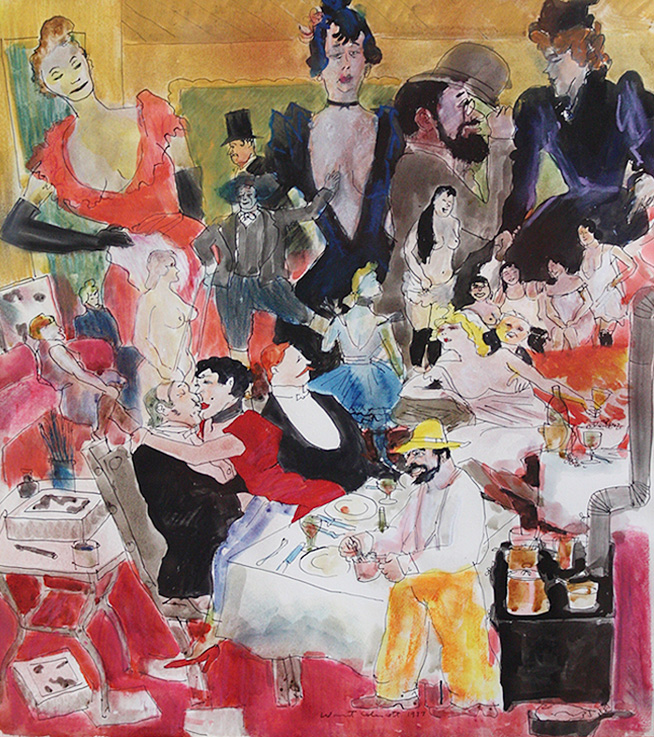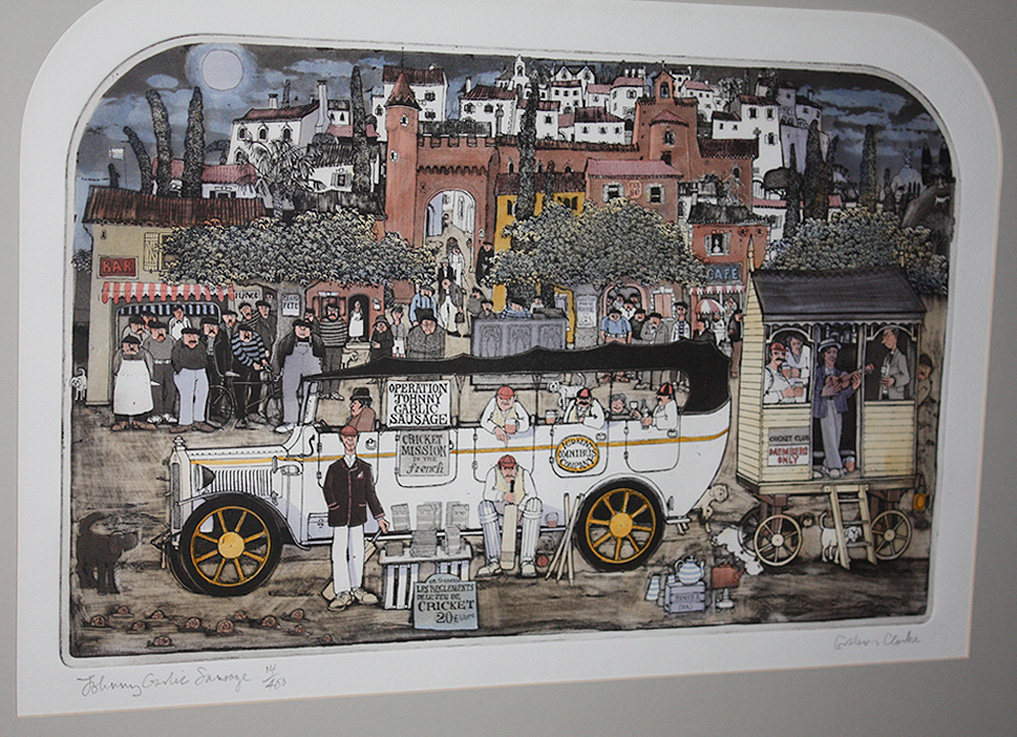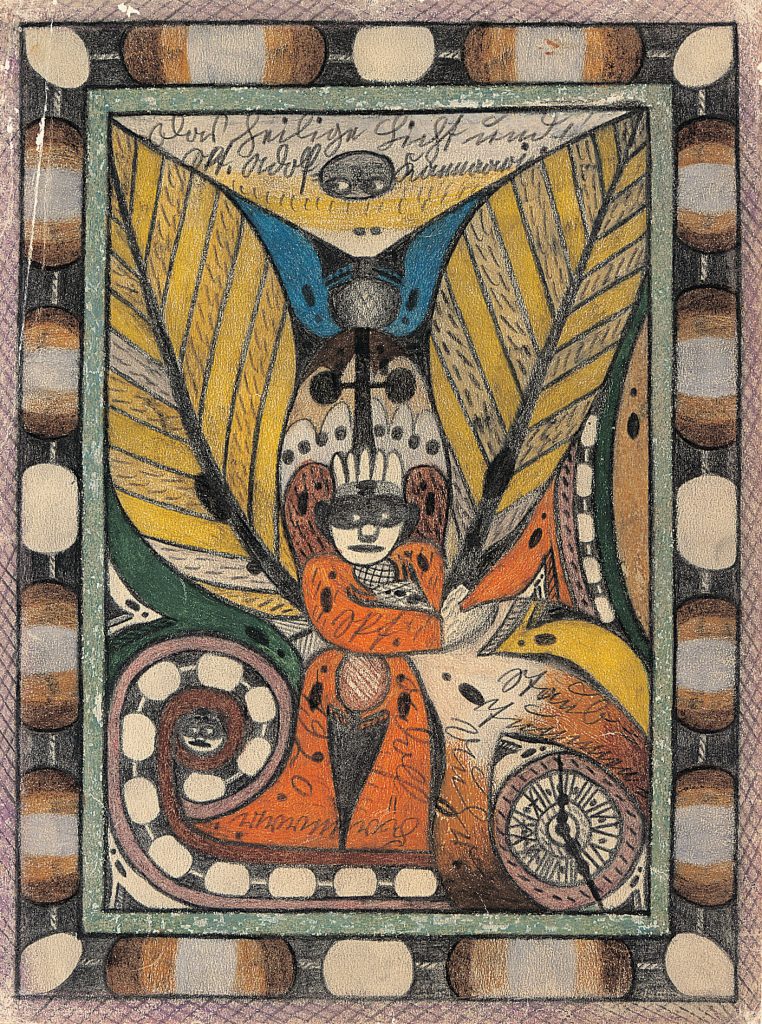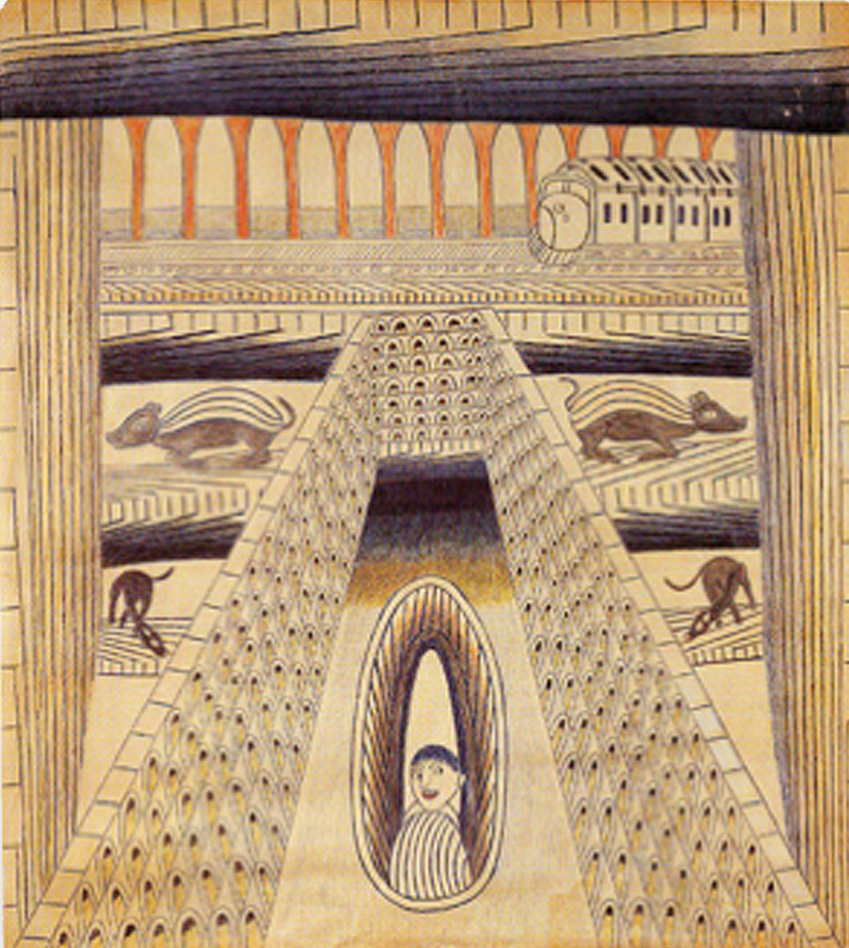The Petullo Collection is commonly known as the Anthony Petullo Collection of Self-taught & Outsider Art. But the broader collection includes works by many well known trained artists. There were more than 600 pieces in the collection before I donated 350 artworks to the Milwaukee Art Museum and other museums. Many of the early acquisitions are gone. Some were given to art museums, others to family and friends. Some are still around but in the closet. Why in the closet? Because I really didn’t love the work in the first place. It’s all quite a normal collecting process. All collectors may make a few wrong choices – wrong for them. The works may be very good. They just don’t suit the collector’s taste.
Like most young people who can’t afford ‘real’ art, I started with posters and reprints of famous paintings. A few years later I added a couple of affordable oil paintings and fine prints. But I had no grand plan to build a collection. The collector’s fever came on slowly as I added more each year.


In the early years of my collecting, two printmakers , Graham Clarke (UK) and Warrington Colescott (Wisconsin), were the best known artists in the Petullo Collection. A number of lesser known self-taught artists were represented but still, there was no blueprint to build a unique collection.
Getting Serious About A Collection
By 1990 I began to think seriously about forming a cohesive collection of some of the best European and American self-taught artists. This grand adventure started in January of that year when I purchased a work by Alfred Wallis (1855-1942), the famous UK primitive painter, and one by the well known American artist, Bill Traylor (1854-1949), born into slavery in Alabama.
More than 150 works were acquired between January 1990 and the opening of Driven to Create: The Anthony Petullo Collection of Self-Taught & Outsider Art exhibition at the Museum of American Folk Art (now the American Folk Art Museum), New York, in September 1993. The 95-piece exhibition, organized by Russell Bowman and Margaret Andera of the Milwaukee Art Museum, was then exhibited at the Milwaukee Art Museum, the University of Illinois – Krannert Art Museum, Akron Art Museum, Tampa Art Museum, and Arkansas Arts Center.
Art Brute

Angel, 1920
Pencil and colored pencil on paper
Since that time, the collection has been exhibited at three more museums, and individual works have been loaned to museums for special exhibitions.
The Anthony Petullo Collection is best known for European and American self-taught works, with about two-thirds from the Europe and the UK. The collection consists of only those works that appeal to me. Many are quite colorful and figurative, others are story-telling. It’s a very livable collection.
When the French artist Jean Dubuffet spoke of his collection of ‘art brut’ artists, what we now call ‘outsiders’, he said that their art is “work produced by people immune to artistic culture in which there is little or no trace of mimicry.” Broadly speaking, this definition applies to many of the ‘untouched’ artists in my collection. That is, those artists who are untrained and relatively uninfluenced by outside forces. They are truly inventive and frequently driven by their own visions. Not included in this group would be the ‘Sunday’ painter and other artists who produce work in response to the whims of the art market.
The Self-Taught Artist
The all-inclusive self-taught genre, if, in fact, it can be called a genre, is filled with many controversial terms (folk, primitive, naïve, visionary, spiritual, untutored, art brut, outsider, etc.) too difficult and too’ hazardous’ to define here. Some works are childlike, others so sophisticated it’s difficult to distinguish the work from that of a trained artist. Some are so inventive and unique that famous trained artists have been inspired by the art and a few even adopted a similar style. One of the most obvious being Jean Dubuffet, whose later works look remarkably like those of Swiss mental patient Heinrich Anton Müller.
The history of the self-taught genre is replete with stories of trained artists discovering and collecting the works of untrained artists. The trained artist sees something unique, fresh and inviting in the work of the untrained artist. In many cases the discoveries have been made at a time when the trained artist was looking for the next ’new thing’. Other times it was the fascination of the artist breaking all the standard rules of art and yet producing a marvelous image. British notables Ben Nicholson and Christopher Wood were fascinated by the work of Cornish primitive Alfred Wallis.
The purest and untouched of the self-taught artists have a few things in common. 1) Almost all are inventive. 2) They rarely change their style from the beginning of their career to the end, unlike many trained artists who experiment with styles and mediums. 3) There is little or no mimicry, as Dubuffet stated. 4) They usually don’t respond to specific image requests. 5) In many cases they are unable to replicate an image. It was a vision and it’s gone, as was the case with Scottie Wilson, Albert Louden and Madge Gill, all represented in the Petullo Collection.

Courtyard, 1954
Pencil and colored pencil on paper
The great artists Van Gogh and Gaugin have been called ‘self-taught’, meaning they had no formal studio training. But they did go to great lengths to learn from other artists. So they really were trained artists. They just had a different type of classroom.
It has been said, “The great self-taught artist is, at the beginning of their career, where the trained artist hopes to be at the end of their career.” It’s a reference to the artist’s uninhibited freedom to do what they really want to do. There’s no market-driven production, no attempt to create the next ‘new wave,’ no shock and awe. The statement might be an exaggeration but there are sufficient examples to give it some merit.
There is also a bit of rebelliousness present in the works of the untrained. It’s a trait that has been applied to this collector, as well. And there may be some truth to it. I have had no formal art education, not even an art history class. But I was an enthusiastic student, learning from artists, curators, dealers critics and more experienced collectors. All were instrumental in helping me build a unique collection.